The climate of our planet is becoming more and more extreme. Research shows how dangerous prolonged heat waves can be to humans. Scientists have documented why the heat is so often fatal.
Extreme heat waves will kill more and more people in the coming decades, according to the study. Already today, about 30 percent of the world's population, for at least 20 days a year, is exposed to temperatures and humidity levels that significantly affect the thermoregulation of the body and pose a potential death. This is written by researchers led by Camilo Mora of the University of Hawaii at Manoa in Honolulu. Taking into account climate change, by 2100, even with a sharp decrease in carbon dioxide emissions, this amount will increase to 48 percent.
Scientists analyzed the available research on heat-related deaths from 1980 to 2014. They found a total of 783 documents from 164 cities in 36 countries with a sharp rise in the death rate during the heat wave. Here are some examples: in 2003, a heatwave swept across Europe, killing several thousand people in France and Germany. In Moscow in 2010, more than 10,000 people fell victim to the heat wave. In Chicago in 1995, there were about 740 deaths. New York, London, Tokyo and Toronto have also suffered from similar extreme weather conditions.
Heat waves in Germany from 1950 to the present day.
The researchers then analyzed the exact climatic conditions that prevailed during such hot phases. Temperature, humidity, wind speed and radiation index were studied. They then compared the values \u200b\u200bwith the data at "normal" times. Thus, they determined the threshold at which extreme heat becomes lethal. The decisive indicators were mainly temperature and relative humidity, the researchers explain.
This heat is deadly
If the outside air temperature exceeds body temperature and crosses the threshold of 37 degrees Celsius, then the body can no longer release body heat outside and because of this it overheats. In addition, the main body cooling mechanism, perspiration, does not work in high humidity conditions. High humidity, even at lower temperatures, is potentially fatal, the researchers note. The temperature and humidity thresholds defined by them are suitable for classifying destructive heat waves around the world.
"This threshold allows us to pinpoint conditions that are detrimental to humans. Since the calculations are based on documented cases of real people around the world, the threshold is particularly reliable and relevant," says study co-author Farrah Powell. "It gets scary how common these deadly conditions are in the world." If we fail to reduce our greenhouse gas emissions, then in 2100, extreme heat waves will affect about 47 percent of the land area and 74 percent of the population.
The outlook for the future is bleak. “For heatwaves, we only have a choice between bad and terrible scenarios,” said study leader Mora. Many people have already paid the highest price for the heat, but the situation will only get worse unless emissions are significantly reduced in the very near future.
Parents are often worried about why the child's temperature rises sharply? In fact, there may be several reasons, but in any case, the very fact that the child has an increase in fever suggests that his body is trying to cope with the viruses and bacteria that have entered it. The temperature, which does not exceed 38.5 degrees, is not considered dangerous and modern doctors recommend not to knock it down and allow the child's body to cope with the virus on its own. But why is a high temperature in a child dangerous, what temperature in children should the parents be alerted to, when and how should it be brought down?
High fever in children
Children in the first years of life are less tolerant of fever than adolescents. Therefore, the first task of parents is to closely monitor the behavior of the child, his skin, and periodically measure the temperature. In addition, provide your baby with plenty of fluids, dress him in lightweight cotton pajamas, and turn off any irritants to the eyes and ears. That is, during this period, doctors recommend a calm environment - turn off the TV and unnecessary lighting elements.
High temperatures in different ages has its own characteristics:
In newborns, the reaction to an increase in temperature is not yet perfect. Moreover, only in isolated cases, it can accompany the development of infection in the body, or inflammatory process.
In children under one year of age, the heat transfer system is not yet sufficiently developed.
In children under 3 years of age, heat transfer exceeds the production of heat, so hypothermia can cause illness.
Temperature rise mechanism
The penetration of foreign bacteria, viruses and infections stimulates the release of leukocytes from the lymphatic tissue and blood, which fight the infection, while releasing a substance such as interleukin. As a result, with the blood flow, interleukin penetrates into the brain thermoregulation center, which is responsible for temperature stability.
Important! The penetration of interleukin into the hypothalamus signals the brain that the child is cold. As a result, the latter begins to heat it up, which causes vasospasm, due to which the heat does not come out, thus raising the overall temperature.
This is the primary reason why high fever is sometimes accompanied by cold extremities in children.
Under the influence of temperature, bacteria and viruses begin to die, which contributes to the transition of fever to the next stage - the child begins to sweat. The death of the infection reduces the number of leukocytes in the blood, respectively, interleukin no longer affects the thermoregulation of the body.
Sometimes, a high fever is the only way to fight off an infection. But this condition can sometimes lead to negative consequences.
As already described above, there are several reasons that can cause an increase in temperature. The main ones are: 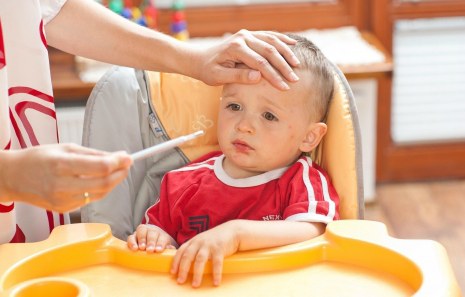 Viral infection
Viral infection
Bacterial infection
Allergy,
Overheat,
Stress,
Teething.
How to correctly measure body temperature in children
A high temperature is a symptom that the child's body is actively fighting an infiltrated infection. But tactile sensations cannot be taken seriously. To measure the temperature and make sure it is really high, you need to use a thermometer. The thermometer can be mercury or electronic. Electronic thermometers are the safest device for measuring body temperature in children, but, unfortunately, their readings are not always accurate.
You need to measure the temperature in armpit, inguinal fold or in the rectum. In this case, the baby should be completely calm and not cry. You can not measure body temperature while eating.
Remember that the thermometer readings in the evening will be slightly higher than in the morning. The duration of the procedure should be approximately 10 minutes.
Dangerous temperature for a child
What should parents do if the baby has a high fever? What temperature is considered dangerous for children? It should be noted right away that the actions of the parents to reduce it are not always justified and expedient. For example, for viral diseases, when antibiotics are not used for treatment, fever is considered the only effective method treatment. But not if the indicator of the thermometer exceeds 40 degrees. Let's consider the question, what is the danger of a high temperature in a child and at what indicator of the thermometer should it be reduced?
In the first year of a child's life, the function of thermoregulation has not yet been improved, so the thermometer indicator can range from 36.6 to 37, and sometimes up to 37.2 degrees. If, with such indicators, there are no other symptoms of the disease, then they are considered normal and there is no need to knock it down - the child is completely healthy.
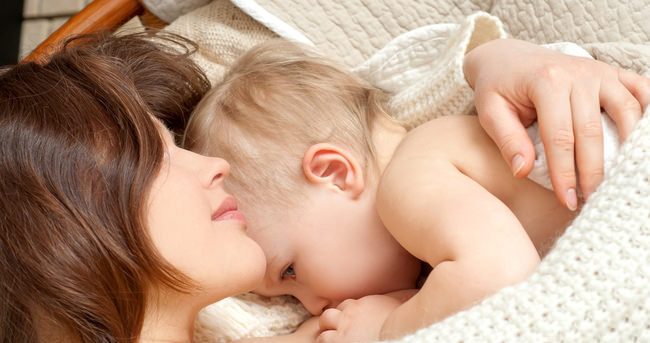 Subfebrile temperature (37-38 ° C) can manifest itself when overheated. And if such an indicator persists in a child for 4 days or more, then it should be shown to the doctor. This may indicate a decrease in immunity or the presence of an inflammatory process in his body caused by viruses. It should be noted that subfebrile temperature a teenager with vegetative-vascular dystonia may develop without an infectious disease.
Subfebrile temperature (37-38 ° C) can manifest itself when overheated. And if such an indicator persists in a child for 4 days or more, then it should be shown to the doctor. This may indicate a decrease in immunity or the presence of an inflammatory process in his body caused by viruses. It should be noted that subfebrile temperature a teenager with vegetative-vascular dystonia may develop without an infectious disease.
A febrile temperature of 38 to 39 ° C is a high fever, but it reduces the activity of the infection. But if the indicator of the thermometer rises higher, then for the child it is already considered dangerous. Therefore, a temperature between 39 and 41 ° C is called pyretic, and can cause dangerous complications on the part of the cardiovascular system and even convulsions.
In the event that the temperature rises above 41 ° C, an ambulance should be called immediately. With such indicators, irreversible consequences can occur in the brain, which leads to death.
It should be noted that for children with diseases of the cardiovascular system and neurological pathologies, temperatures above 38 degrees are also considered dangerous!
What should parents do if the body temperature rises above 39 degrees.
The behavior and timely response of the parents will help ease the suffering of the child in time, so each of them should know the basic rules that need to be followed in high heat.
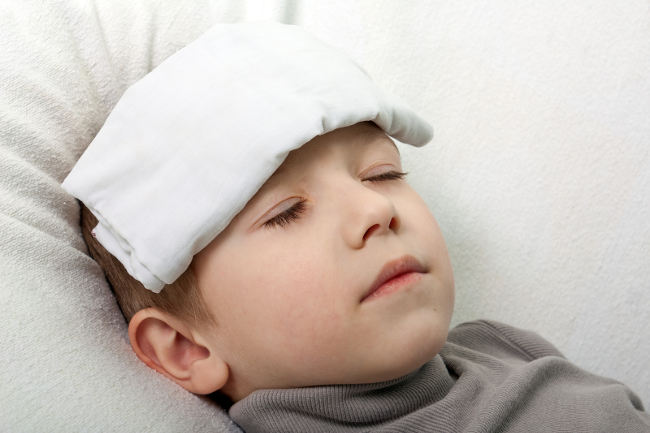 1. First, make sure that the child's room is well ventilated and that the humidity level is correct.
1. First, make sure that the child's room is well ventilated and that the humidity level is correct.
2. Undress the child and wipe his body with a soft cloth dampened with water at room temperature. You can put a cool compress on your forehead.
3. Give the sick person a drink - drinking plenty of fluids helps to eliminate toxins.
4. Feel the patient's limbs. If they are cold, while the body is hot, then this indicates that the baby has spasms. Put on warm socks and try to warm up his legs and arms.
5. If at a body temperature of 39 and above the baby has chills, then the process of rubbing with warm water is not recommended. In this case, it is better to wrap the patient in a warm blanket, which stimulates the reduction of heat.
6. It is necessary to bring down the high temperature with drugs based on paracetamol or ibuprofen. Never knock a child's temperature down with aspirin.
You can bring down the temperature only with children's drugs and follow the recommended dosages exactly. If, after using the pill within 30 minutes, the temperature does not decrease, then you can give the baby a pill based on another antipyretic drug. For example, if the first time you gave your baby a pill based on paracetamol, then the next time the main component of the pill should be ibuprofen, or vice versa.
If the body temperature of 39 ° C has risen in a child under 3 years of age, then parents should immediately call an ambulance.
You will need
- - thermometer;
- - wet wipes;
- - diapers;
- - oilcloth;
- - linen change;
- - table vinegar;
- - antipyretic agent;
- - spray "Aqua Maris";
- – vasoconstrictor drops;
- - a bowl of water;
- - towel
Instructions
Scientists believe that regulating body temperature is a wonderful way to protect against attack by pathogens. They found that raising it by just one degree deprives most bacteria and viruses of the ability to multiply and leads to their death.
But if the forces are unequal, and the body has already exhausted its thermal capabilities, bringing the body temperature to a critical level, urgent intervention from the outside is required. Due to the intense heat, the child may develop convulsions that can engulf the heart muscle and cause cardiac arrest.
When does this critical situation occur? When the thermometer shows 38 degrees in babies up to three years old. Children over three years old have more vitality, and for them the "bar" dangerous temperature slightly higher: 39 degrees.
But in addition to such thermometer readings, it is necessary to take into account a number of circumstances that often complicate the child's condition. First of all, you need to track his breathing. It is dangerous if it is heavy, intermittent, difficult.
Breathing should not be allowed to stop. It is necessary to provide the child with a free flow of fresh air. If he breathes only through his mouth, you need to check the nasal passages, rinse if necessary, and apply vasoconstrictor drops.
Children often vomit during fever. Without waiting for its possible appearance, place a pillow under the child's back in advance, giving him a reclining position. Then the vomit will not enter the respiratory tract. At the same time, it is easier to breathe in this position.
In case of diarrhea, which is also common with a high temperature, put diapers on the baby. Prepare a change of clean laundry. You can put an oilcloth under the sheet. Place a bowl of warm water next to your bed to quickly wash your baby.
Check periodically for signs of dehydration, especially if your toddler is not drinking fluids. Urination may become infrequent and painful, and the amount of urine is less and dark in color. It happens that the baby cries, but his tears no longer flow. Give him plenty of fluids as often as possible in hot weather.
It is recommended to call an ambulance in a number of medical sources if the high temperature persists for more than 48 hours. It is hardly worth waiting for two days. Call the pediatrician on duty immediately to avoid the severe consequences of hyperthermia.
Give the sick child an antipyretic drug containing paracetamol (but not aspirin!) Before the pediatrician arrives. Calculate the dose according to the instructions, based on his age and weight. The pediatrician will prescribe other medications that are needed
note
"Mine of delayed action" - the reading of the thermometer and below 36, and above 37 degrees. If the subfebrile temperature (37.1-37.5 degrees) persists for more than three to five days, this should alert you, since bronchitis, pneumonia, pyelonephritis, and other diseases can develop in this way.
To prevent hyperthermia syndrome, measure the body temperature of a sick child not 2-3 times a day, but every 1-2 hours.
Take temperature measurements correctly. For infants under 1 year old, insert the thermometer between the buttocks. For older children - in a dry armpit. An electronic thermometer is often kept in the mouth.
Do not give your child an antipyretic drug right away. Try to lower the temperature first with wet wipes, vinegar body wraps, and cool compresses.
Sources:
- Mama.ru website / The child has a high temperature
- Website Mayutka.net / High temperature in a child
- Video: High temperature in a child
Temperature changes are a frequent companion of diseases. Why, in most cases, it is not necessary to bring down the temperature and how to remove the fever, if necessary?
What to do with fever is one of the most common questions for physicians and pediatricians. Indeed, fever often scares patients. However, are increased values \u200b\u200balways a reason for panic? Under what conditions does the temperature hold, and under what diseases does it, on the contrary, fall? And when is antipyretic really needed? What temperature should be normal in children and the elderly? MedAboutMe understood these and many other questions.
Body temperature in adults
Thermoregulation is responsible for a person's temperature - the ability of warm-blooded organisms to maintain a constant temperature, reduce or increase it if necessary. The hypothalamus is primarily responsible for these processes. However, today scientists are inclined to believe that it is wrong to define a single center of thermoregulation, because many factors affect a person's body temperature.
In childhood, the temperature changes under the slightest influence, while in adults (starting from 16-18 years old) it is quite stable. Although, it also rarely keeps on one indicator all day. Physiological changes are known that reflect circadian rhythms. For example, the difference between normal temperature in the morning and in the evening in a healthy person will be 0.5-1.0 ° C. A characteristic increase in fever in the evening hours in a sick person is also associated with these rhythms.
The temperature can change under the influence of the external environment, increase with physical exertion, eating certain foods (especially often after spicy food and overeating), during stress, a sense of fear and even intense mental work.
What temperature should be normal
Everyone knows the value of 36.6 ° C. However, what temperature should actually be normal?
The figure 36.6 ° C appeared as a result of research carried out by the German physician Karl Reinhold Wunderlich in the middle of the 19th century. Then he made about 1 million temperature measurements in the armpit in 25 thousand patients. And 36.6 ° C was just the average of a healthy person's body temperature.
By modern standards, the norm is not a specific figure, but the range from 36 ° C to 37.4 ° C. Moreover, doctors recommend periodically measuring the temperature in a healthy state in order to accurately know the individual values \u200b\u200bof the norm. It should be borne in mind that with age, the body temperature changes - in childhood it can be quite high, but decreases by old age. Therefore, an indicator of 36 ° C for an elderly person will be the norm, but for a child it can talk about hypothermia and a symptom of the disease.
It is also important to consider how the temperature is measured - the values \u200b\u200bin the armpit, rectum or under the tongue can differ by 1-1.5 ° C.

Fever is highly dependent on hormonal activity and it is therefore not surprising that pregnant women often experience fever. Hormonal changes are associated with hot flashes during menopause and temperature jumps during menstruation.
It is very important for expectant mothers to closely monitor their condition, while realizing that slightly increased or low temperature during pregnancy - the norm for most women. For example, if the values \u200b\u200bdo not exceed 37 ° C in the first weeks, and there are no other symptoms of malaise, then the condition can be explained by the activity of female sex hormones. In particular, progesterone.
And yet, if the temperature during pregnancy lasts for a long time, then even subfebrile values \u200b\u200b(37-38 ° C) should be a reason for consulting a doctor. With such a symptom, it is important to be examined and tested in order to exclude the presence of such infections - cytomegalovirus, tuberculosis, pyelonephritis, herpes, hepatitis and others.
Fever during pregnancy can also be a sign of common seasonal SARS. In this case, it is very important not to self-medicate, but to see a doctor. If a common cold is unlikely to pose a danger to the fetus, then the flu can lead to serious consequences, up to a miscarriage by early dates... With flu, the temperature rises to 39 ° C.
Baby's temperature
The thermoregulation system in children under 1 year old has not yet been established, therefore, the temperature in a child can change significantly under the slightest influence. This is especially true for babies in the first three months of life. Most often, parents are worried about increased values, however, the reasons for a temperature of 37-38 ° C can be:
- Clothes that are too warm.
- Cry.
- Laugh.
- Food intake, including breastfeeding.
- Swimming in water above 34-36 ° C.
After sleep, the values \u200b\u200bare usually lower, but with active games, the child's temperature rises quickly. Therefore, when making measurements, you need to take into account all external factors that could affect them.
However, too high a temperature (38 ° C and above) can be dangerous for young children. The body uses a lot of water to compensate for the heat, and therefore dehydration is often observed. Moreover, in a child, this condition occurs faster than in an adult. Dehydration can pose a danger to health (often against its background there is a deterioration in the condition, subsequently complicated by pneumonia) and life (with severe dehydration, there can be loss of consciousness and even death).
In addition, some children under 5 years of age have febrile seizures - when the child's temperature rises to 38-39 ° C, involuntary muscle contractions begin, and short-term fainting is possible. If at least once such a state was observed, then, even with a slight heat, the baby needs to bring down the temperature.
Human temperature
Normally, a person's temperature is controlled by the endocrine system, in particular, the hypothalamus and thyroid hormones (T3 and T4, as well as the hormone TSH, which regulates their production). Sex hormones affect thermoregulation. And yet, infections remain the main reason for the rise in temperature, and too low temperature in most cases caused by overwork or lack of vitamins, micro- and macroelements.

Man is a warm-blooded creature, which means that the body can maintain a stable temperature regardless of environmental factors. At the same time, in severe frost, the overall temperature decreases, and in heat, it can rise so much that a person will receive heatstroke. This is due to the fact that our body is quite sensitive to thermal changes - changes of only 2-3 degrees in temperature significantly affect metabolic processes, hemodynamics and transmission of impulses through nerve cells. As a result, blood pressure may rise, convulsions and confusion may occur. Frequent symptoms of low temperature are lethargy, at a value of 30-32 ° C there may be loss of consciousness; and high - delusional states.
Types of elevated temperature
For the vast majority of diseases occurring with an increase in temperature, certain ranges of values \u200b\u200bare characteristic. Therefore, it is often enough for a doctor to make a diagnosis to know not the exact value, namely the type elevated temperature... In medicine, there are several types of them:
- Subfebrile - from 37 ° C to 38 ° C.
- Febrile - 38 ° C to 39 ° C.
- High - over 39 ° C.
- Dangerous for life - the border of 40.5-41 ° C.
Temperature values \u200b\u200bare evaluated in conjunction with other symptoms, since the degree of heat does not always correspond to the severity of the disease. For example, subfebrile temperature is observed in such dangerous diseases as tuberculosis, viral hepatitis, pyelonephritis and others. A particularly alarming symptom is a condition in which a temperature of 37-37.5 ° C is kept for a long time. This may indicate disruption of the endocrine system and even malignant tumors.
Fluctuations in normal body temperature
As already mentioned, the normal temperature in a healthy person can change throughout the day, as well as under the influence of certain factors (food, physical activity, etc.). In this case, you need to remember what temperature should be at different ages:
- Children under one year old - a temperature of 37-38 ° C can be considered the norm.
- Up to 5 years - 36.6-37.5 ° C.
- Adolescence - strong temperature fluctuations are possible associated with the activity of sex hormones. Values \u200b\u200bstabilize in girls at 13-14 years old, in boys, drops can be observed up to 18 years old.
- Adults - 36-37.4 ° C.
- Seniors over 65 - up to 36.3 ° C. A temperature of 37 ° C can be considered a serious febrile condition.
In men, the average body temperature is lower by an average of 0.5 ° C than in women.
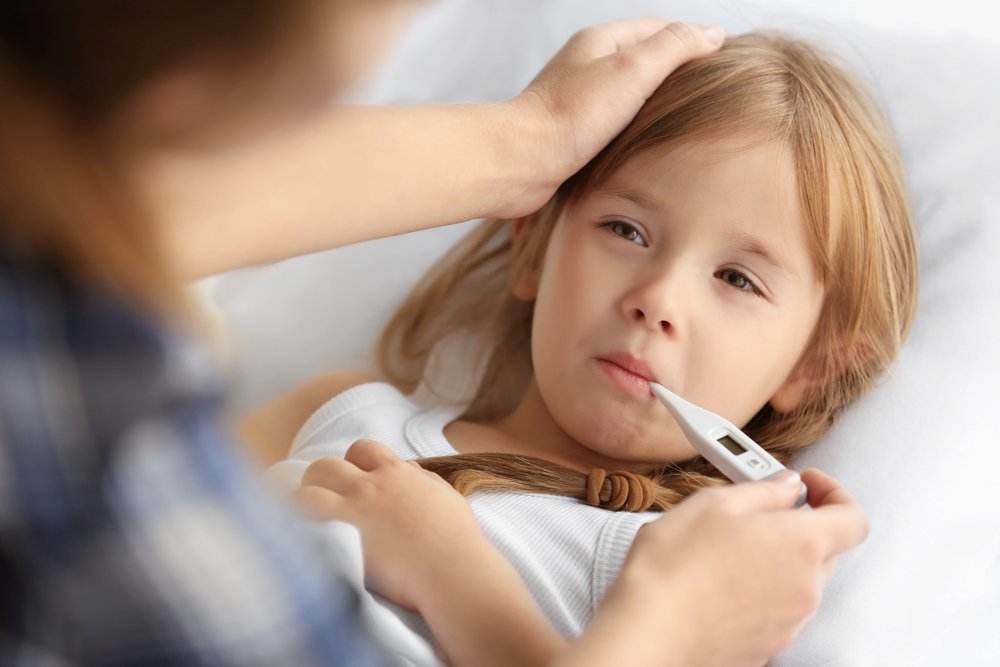
There are several ways to measure body temperature. And in each case there will be their own norms of values. Among the most popular methods are:
- Axillary (in the armpit).
In order to obtain accurate values, the skin must be dry, and the thermometer itself must be pressed tightly enough to the body. This method will take the most time (with a mercury thermometer - 7-10 minutes), since the skin has to heat itself up. The norm of temperature degrees in the armpit is 36.2-36.9 ° C.
- Rectally (in the rectum).
The method is most popular for young children, as one of the safest. For this method, it is better to use electronic thermometers with a soft tip, the measurement time is 1-1.5 minutes. The norm of values \u200b\u200bis 36.8-37.6 ° C (on average, 1 ° C differs from the axillary values).
- Orally, sublingually (in the mouth, under the tongue).
Our method is not widely used, although in European countries this is how temperature is most often measured in adults. It takes 1 to 5 minutes to measure, depending on the type of device. Temperature degrees are normal - 36.6-37.2 ° C.
- In the ear canal.
The method is used to measure the temperature of a child and requires a special type of thermometer (non-contact measurement), therefore it is not widely used. In addition to determining the overall temperature, the method will also help in the diagnosis of otitis media. If there is inflammation, then the temperature in different ears will be very different.
- In the vagina.
Most often used to determine basal temperature (the lowest body temperature recorded during rest). Measured after sleep, an increase of 0.5 ° C indicates the onset of ovulation.
Types of thermometers
Today in pharmacies you can find different types thermometers for measuring human temperature. Each of them has its own advantages and disadvantages:
- Mercury (maximum) thermometer.
It is considered one of the most accurate types and at the same time affordable. In addition, it is used in hospitals and clinics, since it is easily disinfected and can be used for a large number of people. Disadvantages include slow temperature measurement and fragility. A broken thermometer is dangerous because of the poisonous fumes of mercury. Therefore, today it is used quite rarely for children, it is not used for oral measurements.
- Electronic (digital) thermometer.
The most popular type for home use... Quickly measures the temperature (from 30 seconds to 1.5 minutes), informs about the end with a sound signal. Electronic thermometers can be with soft tips (for rectal measurement temperature in a child) and hard (universal devices). If the thermometer is used rectally or orally, it must be individual - for one person only. The disadvantage of such a thermometer is often inaccurate values. Therefore, after purchase, you need to measure the temperature in a healthy state in order to know the possible range of error.
- Infrared thermometer.
A relatively new and expensive look. Used to measure temperature in a non-contact way, for example, in the ear, on the forehead or temple. The speed of obtaining the result is 2-5 seconds. A slight error of 0.2-0.5 ° C is allowed. A significant disadvantage of the thermometer is its limited use - it is not used for measurements in the usual ways (axillary, rectal, oral). In addition, each model is designed for its own way (forehead, temple, ear) and cannot be used in other areas.
Relatively recently, thermal strips have been popular - flexible films with crystals that change color at different temperatures. In order to get the result, it is enough to apply the strip to the forehead and wait about 1 minute. This method of measurement does not determine the exact degrees of temperature, but only shows the values \u200b\u200b"low", "normal", "high". Therefore, it cannot replace full-fledged thermometers.

An increase in body temperature is well felt by a person. This condition is accompanied by the following symptoms:
- Fatigue, general weakness.
- Chills (the more the fever, the more the chills).
- Headache.
- Body aches, especially joints, muscles and fingers.
- Feeling cold.
- Sensation of heat in the eyeballs.
- Dry mouth.
- Decreased or complete loss of appetite.
- Rapid heartbeat, arrhythmias.
- Sweating (if the body can regulate the heat), dry skin (when the temperature rises).
Pink and white fever
Fever can manifest itself in different ways in children and adults. It is customary to distinguish two types of fever:
- Pink (red).
It was named so for its characteristic features - red skin, especially pronounced blush on the cheeks and face as a whole. The most common type of fever, in which the body is able to provide optimal heat transfer - the surface vessels expand (this is how the blood cools), sweating is activated (lowering the skin temperature). The patient's condition, as a rule, is stable, there are no significant violations of the general condition and well-being.
- White.
A rather dangerous form of fever, in which thermoregulatory processes fail in the body. The skin in this case is white, and sometimes even cool (especially cold hands and feet), while the measurement of rectal or oral temperature shows fever. A person suffers from chills, the condition worsens significantly, fainting and confusion may occur. White fever develops when there is a spasm of blood vessels under the skin, as a result of which the body cannot start cooling mechanisms. The condition is dangerous because the temperature rises significantly in vital organs (brain, heart, liver, kidneys, etc.) and can affect their functions.
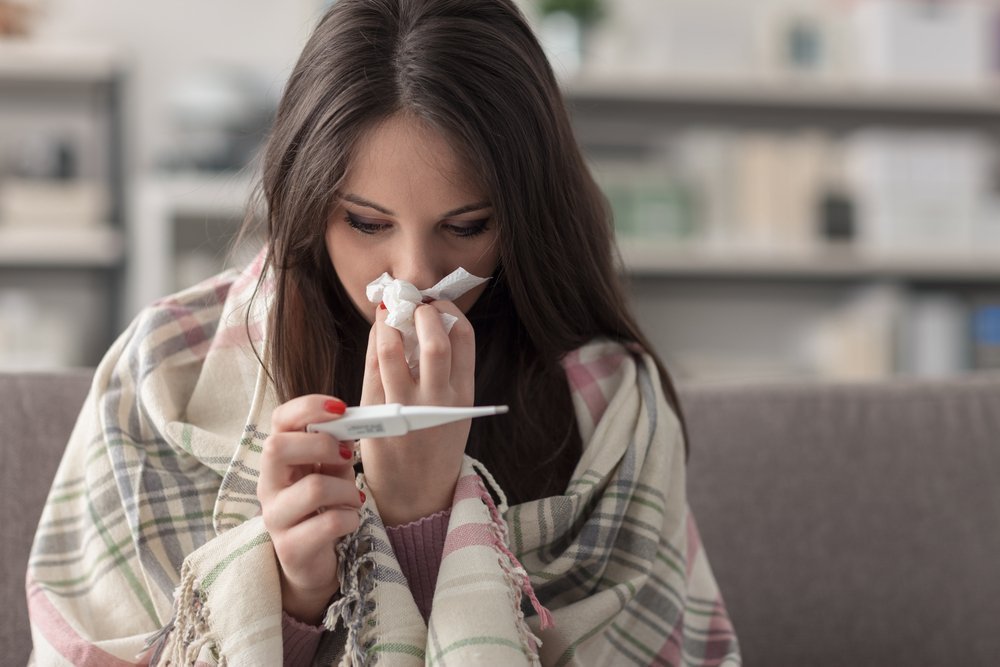
Thermoregulation is provided by the endocrine system, which triggers various mechanisms to increase or decrease a person's temperature. And of course, disturbances in the production of hormones or the functioning of the glands entail disturbances in thermoregulation. Such manifestations, as a rule, are stable, and the values \u200b\u200bremain within the subfebrile range.
The main cause of elevated temperature is pyrogens, which can affect thermoregulation. Moreover, some of them are not introduced from the outside by pathogens, but are secreted by the cells of the immune system. Such pyrogens are designed to improve the effectiveness of the fight against various health-threatening conditions. The temperature rises in such cases:
- Infections - viruses, bacteria, protozoa and others.
- Burns, injuries. As a rule, there is a local increase in temperature, but with a large area of \u200b\u200bthe lesion, there may be a general fever.
- Allergic reactions. In these cases, the immune system produces pyrogens to fight off harmless substances.
- Shock states.
ARI and high fever
Seasonal respiratory diseases - the most common reason temperature rise. Moreover, depending on the type of infection, its values \u200b\u200bwill be different.
- With a standard cold or mild ARVI, a subfebrile temperature is observed, in addition, it rises gradually, on average in 6-12 hours. When correct treatment the fever lasts no more than 4 days, after which it begins to subside or disappears altogether.
- If the temperature rises sharply and exceeds 38 ° C, this may be a symptom of the flu. Unlike other acute respiratory viral infections, this disease requires the mandatory monitoring of a local therapist or pediatrician.
- If the fever resumed after improvement in the condition or does not go away on the 5th day from the onset of the disease, this most often indicates complications. The initial viral infection was joined by a bacterial infection, with the temperature, as a rule, above 38 ° C. The condition requires an urgent call to the doctor, as the patient may need antibiotic therapy.

A temperature of 37-38 ° C is typical for such diseases:
- ARVI.
- Exacerbations of chronic diseases respiratory tract... For example, bronchitis or bronchial asthma, tonsillitis.
- Tuberculosis.
- Chronic diseases internal organs during an exacerbation: myocarditis, endocarditis (inflammation of the heart membranes), pyelonephritis and glomerulonephritis (inflammation of the kidneys).
- Ulcer, colitis.
- Viral hepatitis (usually hepatitis B and C).
- Herpes in the acute stage.
- Exacerbation of psoriasis.
- Infection with toxoplasmosis.
This temperature is typical for the initial stage of thyroid dysfunction, with increased production of hormones (thyrotoxicosis). Hormonal disturbances during menopause can also cause mild fever. Subfebrile values \u200b\u200bcan be observed in people with helminthic invasion.
Diseases with a temperature of 39 ° C and above
High temperature accompanies diseases that cause severe intoxication of the body. Most often, values \u200b\u200bwithin 39 ° C degrees indicate the development of an acute bacterial infection:
- Angina.
- Pneumonia.
- Acute pyelonephritis.
- Diseases of the gastrointestinal tract: salmonellosis, dysentery, cholera.
- Sepsis.
At the same time, intense fever is typical for other infections:
- Flu.
- Hemorrhagic fever in which the kidneys are severely affected.
- Chickenpox.
- Measles.
- Meningitis, encephalitis.
- Viral hepatitis A.
Other causes of high fever
Thermoregulatory disorders can be observed without visible diseases. Another dangerous reason that the temperature has risen is the inability of the body to provide adequate heat transfer. This happens, as a rule, with prolonged exposure to the sun during the hot season or in a too stuffy room. A child's temperature may rise if he is dressed too warmly. The condition is dangerous with heatstroke, which can be fatal for people with heart and lung disease. With severe overheating, even in healthy people, organs, primarily the brain, suffer significantly. Also, fever for no apparent reason can manifest itself in emotional people during periods of stress and intense excitement.

A low temperature is less common than a heat, but at the same time, it can also indicate serious health problems. Indicators of diseases and disorders of the body are considered indicators below 35.5 ° C for an adult, in the elderly - below 35 ° C.
The following degrees of body temperature are considered life-threatening:
- 32.2 ° C - a person will fall into a stupor, severe lethargy is observed.
- 30-29 ° C - loss of consciousness.
- Below 26.5 ° C - death is possible.
Low temperature is characterized by the following symptoms:
- General weakness, malaise.
- Drowsiness.
- Irritability may occur.
- The limbs get cold, numbness of the fingers develops.
- Disturbances of attention and problems with thought processes are noticeable, the speed of reactions decreases.
- General feeling of coldness, trembling in the body.
Low temperature reasons
Among the main reasons for the low temperature are the following:
- General weakness of the body caused by external factors and living conditions.
Inadequate nutrition, lack of sleep, stress and emotional distress can affect thermoregulation.
- Endocrine system disorders.
Associated, as a rule, with insufficient synthesis of hormones.
- Hypothermia.
The most common cause of low fever in humans. The condition is dangerous by a violation of metabolic processes and frostbite of the extremities only in case of a strong drop in temperature. With a slight hypothermia, a person's local immunity decreases, so this or that infection often develops later.
- Weakened immune system
It is observed during the recovery period, after operations, and can manifest itself against the background of chemotherapy and radiation therapy. Also, low temperatures are typical for people with AIDS.
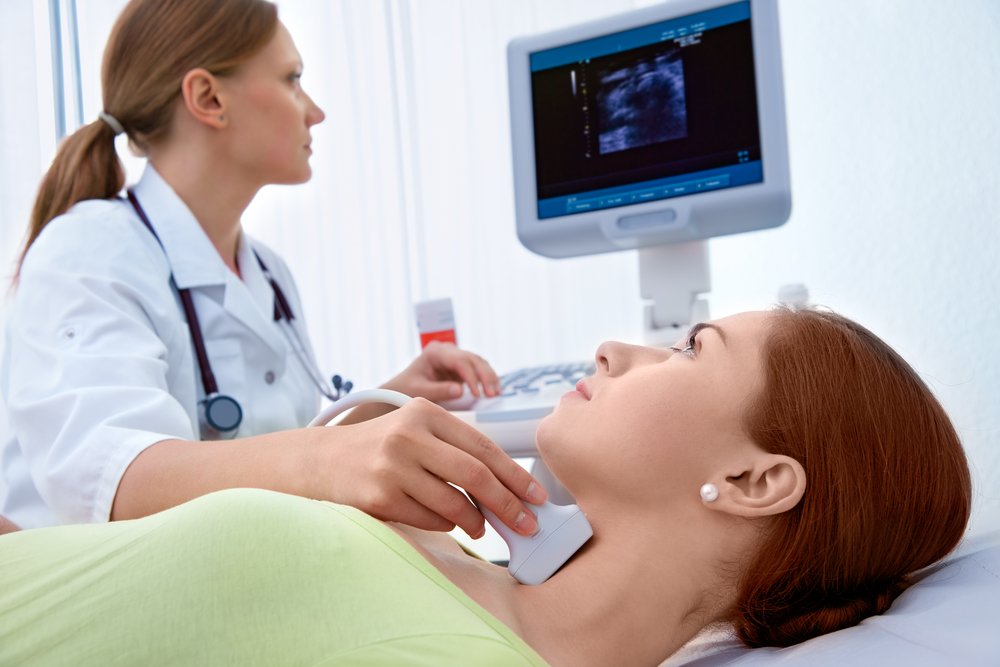
Hormones play an important role in the processes of thermoregulation. In particular, thyroid hormones of the thyroid gland - thyroxine and triiodothyronine. With their increased synthesis, heat is often observed, but, on the contrary, it leads to a decrease in the overall temperature. In the initial stages, this is often the only symptom by which the development of the disease can be suspected.
A stable decrease in body temperature is also observed with adrenal insufficiency (Addison's disease). Pathology develops slowly, it may not manifest itself in other signs for months or even several years.
Low hemoglobin in the blood
Iron deficiency anemia is considered one of the most common causes of low fever. It is characterized by a decrease in hemoglobin in the blood, and this in turn affects the functioning of the whole organism. Hemoglobin is responsible for the transport of oxygen to cells, and if it is not enough, different degrees of hypoxia appear.
A person becomes lethargic, general weakness is noted, against the background of which metabolic processes slow down. Low temperatures are the result of these changes.
In addition, the hemoglobin level can also drop with various blood loss. In particular, people with internal bleeding can develop anemia. If significant blood loss occurs in a short period of time, the volume of circulating blood decreases, and this already affects heat exchange.
Other causes of low temperature
Among the dangerous conditions that require mandatory medical advice and treatment, one can single out such diseases with a low temperature:
- Radiation sickness.
- Strong intoxication.
- AIDS.
- Diseases of the brain, including tumors.
- Shock of any etiology (with massive blood loss, allergic reactions, traumatic and toxic shock).
However, the most common causes of temperatures below 35.5 ° C are improper lifestyle and lack of vitamins. So, nutrition remains an important factor, if it is not enough, then the processes in the body will slow down, and as a result, thermoregulation will be disrupted. Therefore, with various strict diets, especially with a poor diet (deficiency of iodine, vitamin C, iron), low temperature without other symptoms is very common. If a person consumes less than 1200 calories per day, this will certainly affect thermoregulation.
Another common cause of this temperature is overwork, stress, lack of sleep. It is especially characteristic of chronic fatigue syndrome. The body goes into a sparing mode of functioning, metabolic processes slow down in the body and, of course, this is reflected in heat exchange.

Since temperature is only a symptom of various disorders in the body, it is best to consider it in combination with other signs of disease. It is the general picture of a person's condition that can tell what kind of disease is developing and how dangerous it is.
An increase in temperature is often observed with various ailments. However, there are characteristic combinations of symptoms that appear in patients with specific diagnoses.
Fever and pain
In the event that, with abdominal pain, the temperature is kept above 37.5 ° C, this may indicate serious violations of the digestive tract. In particular, this is observed with intestinal obstruction. In addition, a combination of symptoms is characteristic of the development of appendicitis. Therefore, if the pain is localized in the right hypochondrium, it is difficult for a person to pull his legs to the chest, there is a loss of appetite and cold sweat, an ambulance should be called immediately. Complication of appendicitis, peritonitis, is also accompanied by persistent fever.
Other causes of a combination of abdominal pain and fever:
- Pyelonephritis.
- Acute pancreatitis.
- Bacterial diseases intestines.
If the temperature has risen against the background of pain in the head, this most often indicates a general intoxication of the body and is observed with such diseases:
- Influenza and other acute respiratory viral infections.
- Angina, scarlet fever.
- Encephalitis.
- Meningitis.
Pain in joints and muscles, discomfort in the eyeballs are symptoms of temperature above 39 ° C. In such conditions, it is recommended to take an antipyretic.

An elevated temperature against the background of diarrhea is a clear sign of bacterial infection of the gastrointestinal tract. Among intestinal infections with the following symptoms:
- Salmonellosis.
- Cholera.
- Botulism.
- Dysentery.
The cause of the temperature against the background of diarrhea can be severe food poisoning. The combination of such symptoms is very dangerous to health, therefore, self-medication in such cases is unacceptable. It is necessary to urgently call an ambulance and, if necessary, agree to hospitalization. This is especially true if the child is sick.
Fever and diarrhea are contributing factors to dehydration. And with their combination, the loss of fluid by the body can become critical in a fairly short period. Therefore, in the event that it is not possible to adequately compensate for the lack of fluid with drinking (for example, a person has vomiting or the diarrhea itself is pronounced), the patient is injected with intravenous solutions in a hospital. Without it, dehydration can lead to serious consequences, organ damage and even death.
Fever and nausea
In some cases, nausea can be caused by fever. Due to intense heat, weakness develops, blood pressure decreases, dizziness occurs, and this is what causes mild nausea as a result. In this condition, if the temperature is above 39 ° C, it must be brought down. A combination of symptoms can appear in the early days of the flu and be caused by severe intoxication of the body.
One of the causes of nausea and fever during pregnancy is toxicosis. But in this case, values \u200b\u200babove subfebrile (up to 38 ° C) are rarely observed.
In the event that nausea is accompanied by other disorders of the gastrointestinal tract (for example, pain, diarrhea, or, conversely, constipation), simply bringing down the temperature is not enough. This combination of symptoms can indicate serious diseases of the internal organs. Among them:
- Viral hepatitis and other liver damage.
- Acute appendicitis.
- Peritonitis.
- Inflammation of the kidneys.
- Acute pancreatitis.
- Bowel obstruction (accompanied by constipation).
In addition, fever and nausea are often observed against the background of intoxication with stale food, alcohol or drugs. And one of the most dangerous diagnoses for these symptoms is meningitis. All of the listed diseases and conditions require mandatory medical advice.
In the event that vomiting occurs against the background of the temperature, it is very important to compensate for the loss of fluid. Children with this combination of symptoms are most often referred for inpatient treatment.

Increased blood pressure is a common symptom of fever. Fever affects hemodynamics - the heart rate increases in patients, and the blood begins to move faster through the vessels, they expand, and this can affect blood pressure. However, such changes cannot cause severe hypertension, more often the indicators do not exceed 140/90 mm Hg. Art., observed in patients with a fever of 38.5 ° C and above, disappear as soon as the temperature stabilizes.
In some cases, for high temperatureon the contrary, a decrease in pressure is characteristic. There is no need to treat this condition as the readings return to normal after the fever subsides.
At the same time, for hypertensive patients, any, even a slight fever, can threaten with serious consequences. Therefore, they should consult with their doctor and, if necessary, take antipyretics already at rates of 37.5 ° C (especially when it comes to the elderly).
Pressure and temperature are a dangerous combination for patients with such diseases:
- Coronary heart disease. Cardiologists note that this combination of symptoms sometimes accompanies myocardial infarction. Moreover, in this case, the temperature rises slightly, it may be within the subfebrile parameters.
- Heart failure.
- Arrhythmias.
- Atherosclerosis.
- Diabetes.
In the event that low pressure and temperature in the subfebrile range persist for a long time, this may be a sign of oncopathology. However, not all oncologists agree with this statement, and the symptoms themselves should simply become a reason for a full examination of a person.
Low pressure and low temperature are common combinations. Such symptoms are especially characteristic with low hemoglobin, chronic fatigue, blood loss, and nervous disorders.
Fever without other symptoms
Fever or fever without symptoms associated with acute infections, should be the reason for a mandatory medical examination. Violations can talk about such diseases:
- Chronic pyelonephritis.
- Tuberculosis.
- Malignant and benign tumors.
- Organ infarctions (tissue necrosis).
- Diseases of the blood.
- Thyrotoxicosis, hypothyroidism.
- Allergic reactions.
- Early stage rheumatoid arthritis.
- Disorders of the brain, in particular the hypothalamus.
- Mental disorders.
Fever without other symptoms also occurs against the background of overwork, stress, after prolonged physical activity, overheating or hypothermia. But in these cases, the indicators stabilize. If we are talking about serious illnesses, the temperature without symptoms will be quite stable, after normalization, it will rise or fall again over time. Sometimes hypothermia or hyperemia is observed in a patient for several months.

An elevated temperature can cause significant discomfort, and in some cases even pose a threat to life. Therefore, any person needs to know what to do with a fever and how to bring down the temperature correctly.
When to bring down the temperature
Not always, if the temperature rises, it needs to be brought back to normal. The fact is that with infections and other lesions of the body, he himself begins to produce pyrogens, which cause fever. High temperatures help the immune system fight off antigens, in particular:
- The synthesis of interferon, a protein that protects cells from viruses, is activated.
- The production of antibodies is activated, which destroy antigens.
- The process of phagocytosis - absorption is accelerated foreign bodies phagocytic cells.
- Reduced physical activity and appetite, which means that the body can spend more energy to fight infection.
- Most bacteria and viruses survive best at normal human temperatures. When it rises, some microorganisms die.
Therefore, before making the decision to "bring down the temperature", you need to remember that fever helps the body to recover. However, there are still situations in which the heat must be removed. Among them:
- Temperature is over 39 ° C.
- Any temperature at which there is a serious deterioration in the condition - nausea, dizziness, etc.
- Febrile seizures in children (any fever above 37 ° C goes astray).
- In the presence of concomitant neurological diagnoses.
- People with diseases of the heart and blood vessels, with diabetes.
Air, humidity and other parameters in the room
There are many ways to lower the temperature. But the first task should always be to normalize the air parameters in the room where the patient is. This is especially important for children in the first years of life, and it is critical for babies. The fact is that the child's perspiration system is still poorly developed and therefore thermoregulation is carried out to a greater extent through breathing. The kid inhales cool air, which cools his lungs and the blood in them, and exhales warm air. In the event that the room is too warm, this process is ineffective.
Indoor humidity is also important. The fact is that the humidity of the exhaled air is normally close to 100%. At a temperature, breathing quickens and if the room is too dry, through breathing a person additionally loses water. In addition, the mucous membranes dry out, congestion develops in the bronchi and lungs.
Therefore, the ideal parameters in the room where the patient with fever is located are:
- Air temperature - 19-22 ° C.
- Humidity - 40-60%.
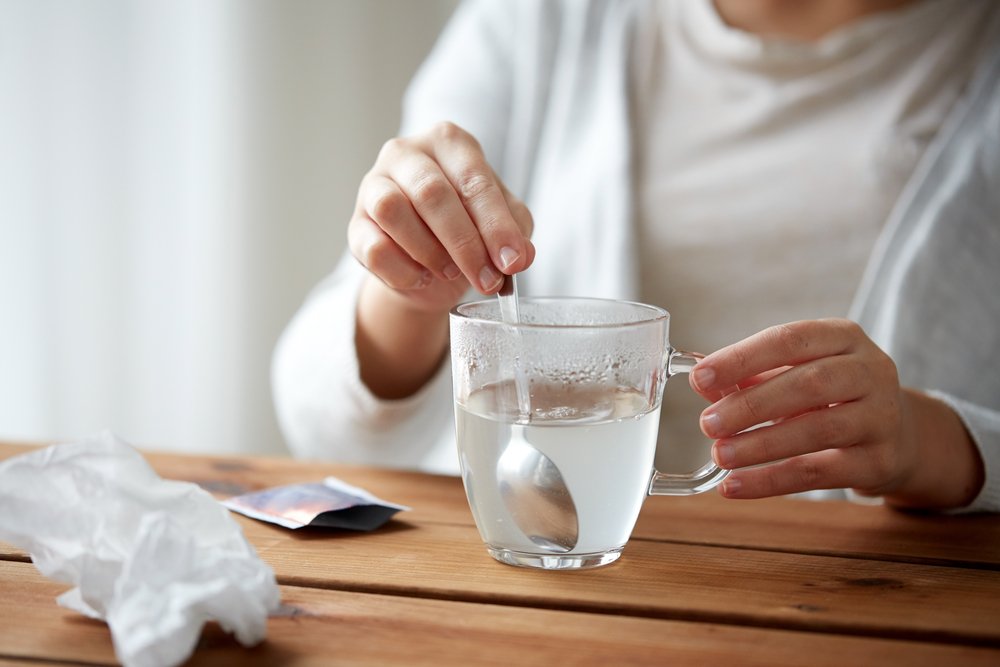
In the event that you need to quickly bring down the temperature, you can use antipyretics. They are taken symptomatically, which means that as soon as the symptom goes away or becomes less pronounced, the medication is stopped. Drinking antipyretics throughout the disease for prevention is unacceptable.
One of the main conditions for the successful action of this group of drugs is drinking plenty of fluids.
The main antipyretic:
- Paracetamol.
Actively prescribed for adults and children, it is considered a first-line drug. However, recent studies, in particular, carried out by the American organization FDA, have shown that if taken uncontrolled, paracetamol can cause serious liver damage. Paracetamol works well if the temperature does not exceed 38 ° C, but in extreme heat it may not work.
- Ibuprofen.
One of the key non-steroidal anti-inflammatory drugs (NSAIDs) used for fever. It is prescribed for adults and children.
- Aspirin (acetylsalicylic acid).
For a long time it was the main drug in the NSAID category, but over the past decades it has been proven to be associated with severe kidney and liver damage (in case of overdose). Researchers also believe that taking aspirin in children can cause the development of Reye's syndrome (pathogenic encephalopathy), so at the moment the drug is not used in pediatrics.
- Nimesulide (nimesil, nise).
Latest generation non-steroidal anti-inflammatory agent. Contraindicated in children.
- Analgin.
Today it is practically not used as an antipyretic, but it can still relieve fever.

The temperature can also be brought down with the help of folk remedies. Among the most common and simple ways - decoctions of herbs and berries. Drinking plenty of fluids is always recommended at high temperatures as it helps improve sweating and reduces the risk of dehydration.
Some of the more popular herbs and berries used for fever are:
- Raspberry, including leaves.
- Black currant.
- Sea buckthorn.
- Lingonberry.
- Linden.
- Chamomile.
A hypertonic solution will also help to normalize the temperature. It is prepared from ordinary boiled water and salt - two teaspoons of salt are taken for 1 glass of liquid. This drink helps the cells to retain water and is great if the temperature is manifested against the background of vomiting and diarrhea.
- Newborns - no more than 30 ml.
- From 6 months to 1 year - 100 ml.
- Up to 3 years - 200 ml.
- Up to 5 years - 300 ml.
- Over 6 years old - 0.5 liters.
Ice can also be used for fever symptoms. But you need to use it very carefully, since a sharp cooling of the skin can lead to vasospasm and the development of white fever. Ice is placed in a bag or placed on a piece of cloth and only in this form is applied to the body. Drying off with a towel dipped in water is a good alternative. cold water... In the event that it is not possible to bring down the temperature, antipyretics do not work, but folk remedies do not help, you need to urgently call an ambulance.
How to raise the temperature
If the body temperature drops below 35.5 ° C, the person feels weak and unwell, you can increase it in the following ways:
- Warm, abundant drink. Tea with honey, rosehip broth helps well.
- Liquid warm soups and broths.
- Warm clothes.
- Covering with several blankets, a heating pad can be used for greater effect.
- Hot bath. May be supplemented with essential oils of coniferous trees (fir, spruce, pine).
- Exercise stress. A few vigorous exercise can help improve circulation and body temperature.
In the event that the temperature remains below 36 ° C for a long time, you need to consult a doctor. And after finding out the cause of such a symptom, the specialist will prescribe the appropriate treatment.

In some cases, high fever can pose a serious threat to health, and then you simply cannot do without the help of doctors. An ambulance must be called in such cases:
- Temperature 39.5 ° C and above.
- Sharp rise temperature and the inability to bring it down with antipyretic and other methods.
- Against the background of the temperature, diarrhea or vomiting is observed.
- The fever is accompanied by shortness of breath.
- there is severe pain anywhere on the body.
- There are signs of dehydration: dry mucous membranes, pallor, severe weakness, dark urine or lack of urination.
- High pressure and temperature above 38 ° C.
- The fever is accompanied by a rash. A red rash that does not disappear with pressure is especially dangerous - a sign of meningococcal infection.
Fever or low temperature is an important signal of the body about illness. This symptom should always be given due attention and try to fully understand its causes, and not just eliminate it with medications and other methods. But at the same time, do not forget that normal temperature is an individual concept and not everyone corresponds to the well-known indicator of 36.6 ° C.
Most parents simply panic if their child has a fever. There can be many reasons for this condition, but it is necessary to understand: fever signals that the body is trying to cope with some kind of infection. If the indicators increase slightly, then you should not worry, but with sharp jumps up, you should know how dangerous a high temperature in a child is and what to do in such cases.
The mechanism of increasing body temperature
When foreign microorganisms or viruses penetrate into the body of a child, and an adult, too, a response is observed in the form of stimulation of the release of leukocytes, which immediately begin to destroy the pathogens. At the same time, the substance interleukin is produced. It enters the bloodstream, reaches the center of thermoregulation in the brain, which is responsible for increasing the temperature.
The hypothalamus perceives such information as a signal that the child is cold, and begins to eliminate this problem. For this, the vessels are narrowed so that the heat does not go out, so the body temperature rises. This can explain why the child has cold hands and feet at high temperatures.
Under the influence of high temperature, viruses and bacteria die, and the fever passes to the next stage - the baby begins to sweat a lot. Gradually, with the death of pathogenic microorganisms, the amount of interleukin decreases and the effect on the center of thermoregulation ceases. The temperature goes down to its own normal performance... The body thus copes with the infection, but what is the danger of a high temperature in a child? What consequences can it lead to?
norms in children
In early childhood, the body is less tolerated by the body, therefore, during illness, parents must constantly observe the baby, note his condition, monitor his behavior, and periodically measure the temperature. All doctors recommend during this period to provide the child with peace, both physical and mental.
Mothers must know why high fever is dangerous, what kind of help should be given to their child. But it should be noted that at different ages there are peculiarities of increased body temperature:
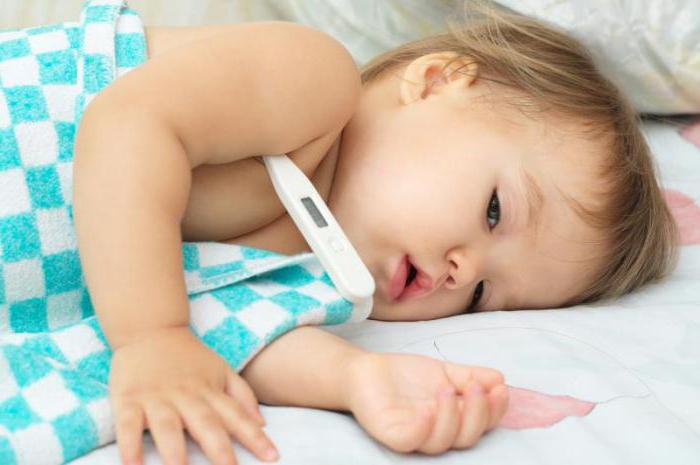
Temperature rise provocateurs
Before you panic and look for an answer to the question of why high body temperature is dangerous, you need to find out why it can rise:
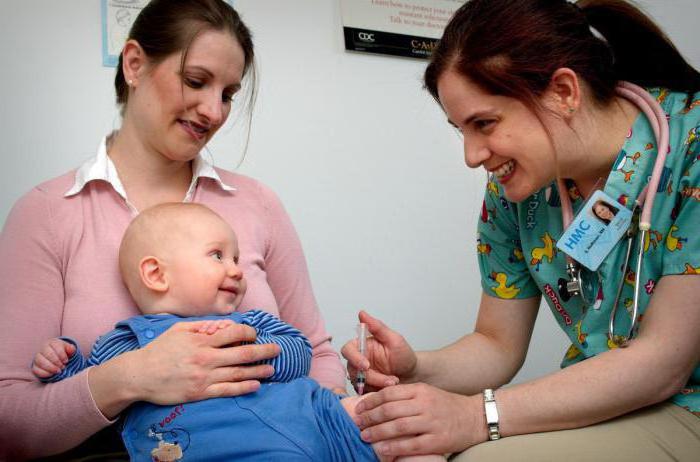
We measure the temperature correctly
Quite often, mothers try to measure body temperature by placing their lips or hand on the baby's forehead. But tactile sensations do not always give an accurate idea of \u200b\u200bthe child's condition, so it is better to use a special device, that is, a thermometer.
They now come in various modifications and varieties. Most are accustomed to using a mercury device, but now electronic devices are becoming more and more popular. They are, of course, more secure, but they may not always show the values \u200b\u200baccurately.
The accuracy of the measurements depends on the location where the body temperature is measured, as well as on the correctness of the process. Most often, in a child and an adult, the temperature is measured in the armpit, but this can be done in the mouth or in the groin fold, for example, in infants.
It is necessary to hold the thermometer for at least 8-10 minutes to get an accurate reading. It should be borne in mind that, purely physiologically, even in a healthy person, the temperature in the morning is slightly lower than in the evening. 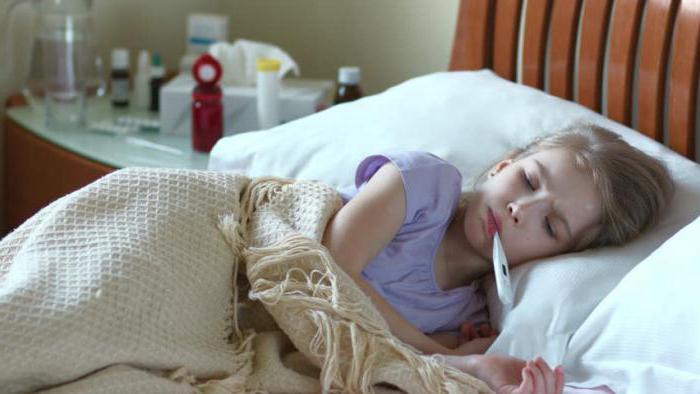
Dangerous temperature for a child
To answer the question, what is the danger of high temperature in children, it is necessary to find out, and what indicators can be considered as such. Quite often, you can see when parents try to immediately give the child an antipyretic agent, as soon as the readings on the thermometer have passed a little over 37. But this is not at all justified, because when viral infections this is the only way for the body to overcome the disease, since antibacterial agents will not work.
But with some indicators, it is still worth helping the baby, parents should know how dangerous a high temperature in a child is, if it is not brought down for a long time. Let's find out what the danger is and when it is necessary to use medicines to lower the temperature.
It all depends on the age of the child. For example, in infants, thermoregulation is imperfect, therefore, for them, indicators in the range of 36.6-37.2 are considered the norm, if there are no other signs of the disease. When overheating, the temperature can rise to 38 degrees, but if it does not drop for more than 4 days, then you should see a doctor. This may be evidence of low immunity or the presence of a hidden infection in the body.
In children with vegetative-vascular dystonia, a slight increase in temperature can also be observed against the background of a complete absence of any signs.
If there is a viral or bacterial infection, then the indicators of 38-39 degrees are the temperature at which the active death of pathogens occurs. Is a high temperature dangerous in a child in such a situation? The doctor will most often answer in the negative, but the mother will recommend to monitor the condition more closely.
But if the indicators are rapidly creeping up, then you need to urgently call an ambulance. Why the temperature rise above 40 is dangerous, we will analyze further.
Danger of high temperature
If the indicators on the thermometer have reached 40 degrees, then it is necessary for the baby to provide urgent help, it is only advisable to consult a doctor, because some drugs may be contraindicated in such cases. Let's take a look at why temperatures above 40 are life-threatening:
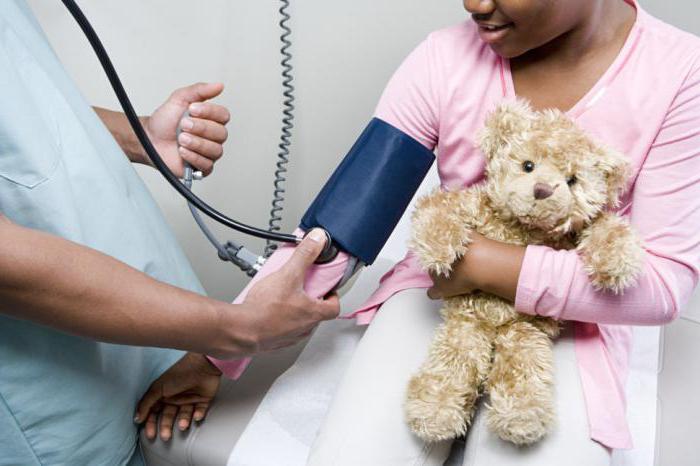
This is why temperatures above 40 degrees are dangerous. Of course, the indications for bringing down the temperature can be individual in each case - sometimes even 38 degrees may require the use of drugs.
For whom is high temperature the most dangerous?
Each organism has its own individual characteristics, some tolerate infectious diseases against the background of an almost insignificant increase in temperature, and in other children, even teething is accompanied by a jump of up to 40 degrees. But there is, according to experts, a category of children for whom a strong fever is especially dangerous:
- If a serious cardiovascular disease is diagnosed.
- There are pathologies of the pulmonary system.
- In babies under the age of five, as there is a great risk of developing febrile seizures. Especially if these have already been observed during the temperature.
- There are disturbances in the functioning of the nervous system.
- The presence of diabetes mellitus or other diseases associated with disruption of the endocrine system.
If the child is often sick with a high fever, then the parents should consult with a doctor in advance about helping him in such a situation.
We provide assistance to a child at high temperatures
Why a temperature above 40 is dangerous is understandable, but how to provide first aid to a child before a doctor arrives? Here are some guidelines:
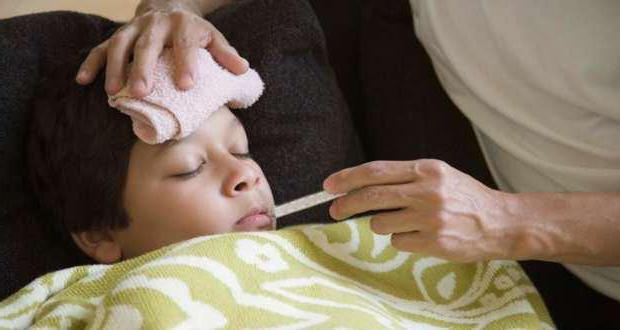
Only drugs approved for children can be used to bring down the temperature. The dosage and duration of admission should be discussed with your doctor.
Komarovsky on the first actions of parents at a high temperature in a child
We have already figured out why a high temperature in a child is dangerous. Komarovsky believes that the most important thing at this time is to provide conditions under which the body will lose excess heat. Considering that heat loss occurs in two ways - when the air in the lungs is warmed or during sweating, a popular doctor recommends the following actions for children with heat:
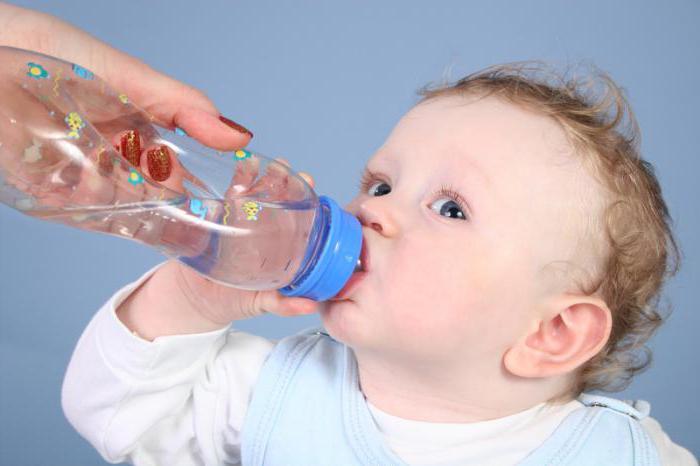
As a drink, you can use not only ordinary water, but also fruit drinks, dried fruit compote.
When to help a child
If the child has reached the age of five, then you can not bring down the temperature to 39 degrees, if there is no indication for urgent help. With babies, things are a little different. If the thermometer is already 38, then you will have to resort to the help of a nursing baby when:
- He has cold hands and feet.
- The skin became pale.
- The child is too capricious.
- Mom noticed apathy or inappropriate behavior.
- Refuses breast or bottle.
It is clear that moms are ready to do anything to help their baby, but some things simply cannot be done if the child has a high temperature:
- It is contraindicated to rub the child with an alcohol solution, since such a procedure only expands the vessels even more, which, in this state, are already dilated. In addition, the baby is poisoned with alcohol.
- If the temperature does not go astray, it is better to call a doctor, but it is absolutely impossible to give Aspirin. It can cause kidney damage and internal bleeding.
- It is not recommended to wrap the child in wet and cold sheets, apply cold heating pads, as this only lowers the temperature of the skin, but inside it remains high, and this is already dangerous.
- A ventilator should not be used to lower body temperature.
It turns out that not all is good when it comes to high fever in a child. Some may even be dangerous!
When to take medications
Indications for taking antipyretics are the following situations:
- The child does not tolerate heat very well.
- Baby high risk development of seizures.
- The readings on the thermometer exceed 39 degrees.
Parents should be aware that in children's practice it is recommended to use only Ibuprofen or Parcetamol. Forbidden in the treatment of children "Analgin", it can provoke anaphylactic shock, liver and kidney damage.
The use of drugs such as "Phenacetin" and "Amidoprine" is fraught with toxic reactions. The dosage of even approved drugs should be adjusted according to the weight and age of the child.
Conclusion
In conclusion, I would like to say that before you throw all your strength into the fight against high fever, you need to find out its cause. After all, heat is just a protective reaction of the body, not a disease. Sometimes it is easier to let the body deal with the infection on its own than to stuff the baby with pills. But you must always be ready to help if the indicators on the thermometer creep up sharply.
